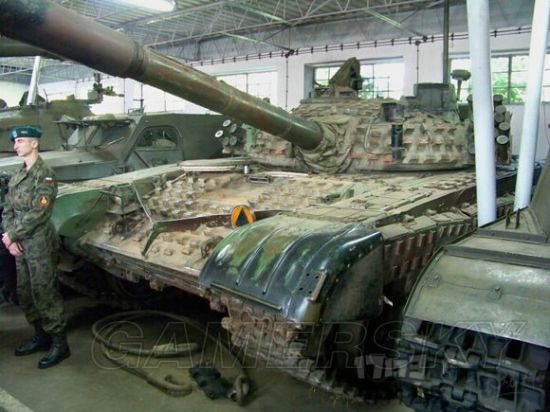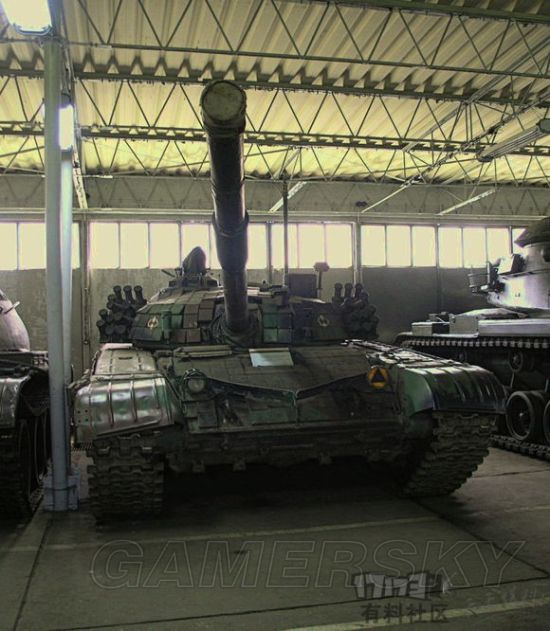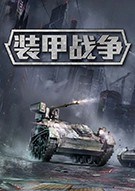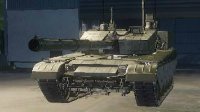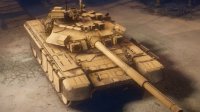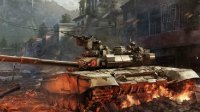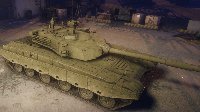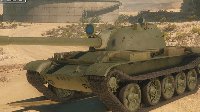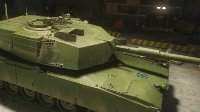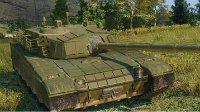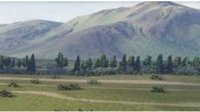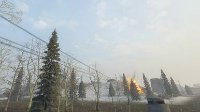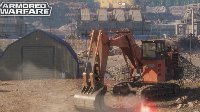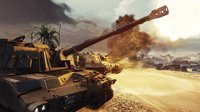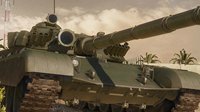装甲战争新金币装甲车T-72M2威尔克介绍
《装甲战争》外服爆料,游戏在设计一款新的金币车,来自波兰的T-72M2威尔克,下面来看看这辆装甲车的介绍吧。
News In Development: T-72M2 Wilk
新坦克:t-72m2 威尔克
The history of the T-72M2 WILK will be presented by a guest author, Micha? Kizeweter, a Polish armor enthusiast and expert and an advisor to the Armored Warfare development team.
Up until the early 1980s, the Polish People’s Armed forces, much like their fellow non-Soviet Warsaw Pact allies such as the East Germany and Czechoslovakia, were restricted to the T-55A tank as their primary MBT in armored units. It was not until that point that the Soviet Union saw fit to grant the use of newer designs to their allies. Poland and Czechoslovakia, being Soviet Union’s to-go supplier of arms for the rest of the Warsaw Pact countries, were sold the T-72 production licenses and received technological documentation in order to begin immediate production.
t-72m2威尔克由客座作家 Micha Kizeweter提出,她是波兰装甲爱好者和专家和装甲战的发展团队的顾问。
直到上世纪80年代初,波兰人民的武装力量(装甲部队的主战坦克)像其他非苏联华沙条约的盟友如德国和捷克斯洛伐克那样,被限制只能使用t-55a坦克
此时,苏联才同意将新的设计用于他们的盟国。并对盟国出售生产许可证和发送生产技术文件
One thing that needs to be kept in mind is that the Soviet export equipment for the most part came in two distinct flavors: one for fellow “trusted” Warsaw Pact countries, and the other for everyone else (primarily for friendly Arab states).
Poland launched domestic production of the T-72M variant in 1981. This variant would best be described as a middle ground between the original T-72 Ural and the T-72A and was developed by the Soviet Union for export. A few years later, in 1986, the production of this tank was replaced by a much-improved T-72M1 that for all intents and purposes was almost a complete copy of the original T-72A. Both variants were manufactured by Bumar-Łabędy Mechanical Works plant in Gliwice (Zakłady Mechaniczne Bumar-Łabędy).
However, even as the production began, the T-72M1 was no longer considered by Polish general staff as a sufficient vehicle for the modern battlefield, especially considering the introduction of the next generation MBTs by the western powers. The West-German Leopard 2 and the American M1 Abrams were more fearsome than any previously known western tanks encountered by Soviet equipment in a number of Cold War proxy wars.
In the second half of the 1980s, Poland decided to start a program to increase the combat capabilities of their armored forces. This program had two aspects:
First, to initiate negotiations with the Soviet Union for a newer T-72 variant
Second, to develop the means to domestically upgrade the T-72M1 using technological advances of the Polish industry.
The first approach resulted in the formal start of negotiations in 1988. They most likely would have resulted in obtaining a license for a copy of the T-72B MBT variant called the T-72S, similar to the version that was sold to Iran in 1990 in a form of assembly kits. Unfortunately, for a number of reasons, the negotiations collapsed in 1989/90.
需要记住的一点是,苏联的出口设备大多有两种截然不同的味道:一种是“值得信任的”华沙公约国家;另一种是其他所有国家(主要是友好的阿拉伯国家)。1981在波兰推出T-72是其国内生产的另一种型号。这一型号可能介于T-72原型和乌拉尔t-72a中间,苏联用其进行出口。
在1986年,该坦克被有很大技术改进t-72m1所取代,它基本上完全复制了T-72A。两种型号都是在格利维采生产。
然而,在生产即将开始的时候,波兰参谋认为t-72m1不足以在战场上胜任自己的任务。特别是考虑到西方列强的下一代主战坦克的出现:德国豹2和美国M1艾布拉姆斯比任何苏联时期装备的进行冷战对抗所面对的坦克都要可怕。
上世纪80年代后期,波兰决定启动一个项目来增加他们的装甲部队的作战能力。
这个程序有两个方面:
1、开始与苏联谈判新的T-72改进型
2、利用本国工业继续发展升级T-72M1第一种方法:1988年与苏联的谈判。他们最终可能会获得T-72B的改进型T-72S的生产许可,类似的版本在1990年被出售给了伊朗
不幸的是,由于种种原因,谈判在1989或1990年间失败。
One thing that needs to be kept in mind is that the Soviet export equipment for the most part came in two distinct flavors: one for fellow “trusted” Warsaw Pact countries, and the other for everyone else (primarily for friendly Arab states).
Poland launched domestic production of the T-72M variant in 1981. This variant would best be described as a middle ground between the original T-72 Ural and the T-72A and was developed by the Soviet Union for export. A few years later, in 1986, the production of this tank was replaced by a much-improved T-72M1 that for all intents and purposes was almost a complete copy of the original T-72A. Both variants were manufactured by Bumar-Łabędy Mechanical Works plant in Gliwice (Zakłady Mechaniczne Bumar-Łabędy).
However, even as the production began, the T-72M1 was no longer considered by Polish general staff as a sufficient vehicle for the modern battlefield, especially considering the introduction of the next generation MBTs by the western powers. The West-German Leopard 2 and the American M1 Abrams were more fearsome than any previously known western tanks encountered by Soviet equipment in a number of Cold War proxy wars.
In the second half of the 1980s, Poland decided to start a program to increase the combat capabilities of their armored forces. This program had two aspects:
First, to initiate negotiations with the Soviet Union for a newer T-72 variant
Second, to develop the means to domestically upgrade the T-72M1 using technological advances of the Polish industry.
The first approach resulted in the formal start of negotiations in 1988. They most likely would have resulted in obtaining a license for a copy of the T-72B MBT variant called the T-72S, similar to the version that was sold to Iran in 1990 in a form of assembly kits. Unfortunately, for a number of reasons, the negotiations collapsed in 1989/90.
The second approach was supported by the Polish industry’s successful integration of domestic technologies into the T-55AM modernization package for the T-55A (resulting in the T-55AM Merida and variants). Based on these successes, Poland began to explore various options regarding how to upgrade the T-72M1 on its own.
The Ministry of National Defense Department of Research and Development (Departament Rozwoju i Wdrożeń MON) has commissioned OBRUM R&D Center (Ośrodek Badawczo-Rozwojowy Urządzeń Mechanicznych OBRUM) to begin a project for that very purpose. The project received the name “WILK”, Polish for Wolf. The intent for the project was to develop a way to upgrade the tanks in such a way that the work itself could be carried out by lower level repair and maintenance shops attached to their respective armored units.
The main field of focus was to increase the tank’s survivability by means of:
Increased mobility
Increased protection
Improved night fighting capability
A number of organizations cooperated with OBRUM on the project, including:
Military Institute of Armament Technology in Zielonka (Wojskowy Instytut Techniczny Uzbrojenia)
WOLA Mechanical Plant in Warsaw (Zakłady Mechaniczne Wola)
Industrial Optics Centre in Warsaw (Przemysłowe Centrum Optyki)
Military University of Technology in Warsaw (Wojskowa Akademia Techniczna)
In 1989, when the communist regime fell and any meaningful military cooperation with the Warsaw Pact ceased, Poland found itself alone and the effort to upgrade T-72M1 using domestic technologies was given even more importance.
第二种方法:基于波兰成功整合吸收国内T-55A坦克技术,并为其升级成为T-55AM的经验,波兰开始对如何升级自身的T-72M1开始了探索性的研究。
国防研究与发展部委托波兰格利维策机械设备研究与发展中心(简称obrum)进行此项目。该项目名称“威尔克”(波兰之狼)。
该项目的目的是研究一种可以在各装甲部队所附属的低级维修点内进行维护升级坦克的方案
其主要研究方向是加强坦克的生存能力:
增强机动性
增强装甲抵抗能力
提高夜战能力
其中还有一些组织对波兰格利维策机械设备研究与发展中心进行合作
包括:
位于杰隆卡的军事装备技术研究所
位于华沙的沃拉机械厂
华沙工业光学中心
华沙军事科技大学
在1989年,随着波兰国内共产主义政权的解体和一系列华沙条约的终止,波兰对本国T-72M1的升级给予了更多的重视。
At some point between 1987 and 1990, OBRUM R&D center built three functional prototypes based on the WILK project documentation using three individual platforms:
T-72A
T-72M1
T-72M1D (command variant of T-72M1)
In 1990, the three prototypes created over the course of the WILK project were equipped with the prototypes of the DRAWA FCS (SKO DRAWA).
Furthermore, the following changes and upgrades were added to the original tanks:
Indigenous ERAWA-1 ERA to the frontal area of the tank
All new steel side-screens
SSC OBRA-1 laser illumination warning suite
Passive second generation night vision optics for all crew members
Digital DRAWA FCS prototype
Gun stabilization diagnostics computer
Unspecified modification of the transmission system
New S-12U diesel engine producing 850hp (developed from the Russian V-46-6 diesel)
WPD-1 “Tellur” and WWGD-1 “Erb” smoke grenade launcher systems
在1987年和1990年之间,obrum研发中心给出了“威尔克”的三个原型车方案:
t-72a
t-72m1
t-72m1d(t-72m1改进型)
在1990年,这三辆三的原型车配备了最新的火控系统
此外,还进行了以下的升级改造:
改进正面投影面积
新的侧面钢制装甲
SSC obra-1激光照明警示套件
用于所有成员组的无源二代夜视光学
数字显示系统原型机
火控计算机
新的传动系统
新的850马力的s-12u柴油发动机(俄罗斯v-46-6柴油引擎)
新的烟雾发射器
In July 1991, following the successful examination of the abovementioned vehicles, it was decided to pursue this development direction further. The WILK project was concluded and another one launched, eventually resulting in the creation of the PT-91 TWARDY Main Battle Tank that became, for a time, the most advanced MBT of the Polish armored forces. The importance of the WILK development lies in the fact that it helped to ensure that the PT-91 project would not start from scratch – in fact, fully functional PT-91 prototypes were ready in just 9 months from that date.
One of the WILK prototypes, designated T-72M2D WILK (serving as the reference base for the T-72M2 WILK that will be introduced to Armored Warfare), is currently a part of the Museum of Armored Forces, Land Forces Training Center of Field Crown Hetman Stefan Czarniecki collection in Poznań. While it is currently not accessible to general public, the T-72M2D WILK will hopefully be on display in 2018 once the museum successfully finishes its relocation to a new facility.
In Armored Warfare, the T-72M2 WILK will, as a prototype, appear as a premium vehicle.
在1991年7月上述车辆全部检测通过后,波兰决定进一步继续这个项目的发展。威尔克项目至此结束另一项目由此开始,并最终成为了pt-91特沃迪主战坦克,一时间成为波兰境内最先进的主战坦克。“威尔克”项目的重要性在于它有助于确保pt-91项目不会从零开始,实际上从开始到结束PT-91项目只进行了短短的9个月。
其中一辆被称为T-72M2D的威尔克原型车目前被停放于波兹南的装甲兵博物馆,虽然现在并不能展出但是有望于2018年该博物馆搬迁时作为新的展出坦克进行展览。
在装甲战争中T-72M2“威尔克”原型车将作为金币车出现。
更多相关资讯请关注:装甲战争专区
-
《装甲战争》昨天更新版本,国服专享坦克99A想必很多玩家已经入手了,下面为大家带来装甲战争99A主战弱点实战评测。2017-08-11 11:08:500
-
《装甲战争》是一款坦克类战争游戏,选择适合自己的坦克至关重要,下面为大家带来的是装甲战争T90A主战PVP冰霜雪城实战视频。2017-08-03 16:08:400
-
《装甲战争》中的全球行动模式是PVE模式与PVP模式的一个结合,那么我们要如何才能赢得全球模式的胜利呢?下面为大家带来装甲战争全球行动模式实战教学视频。2017-08-01 18:08:440
-
《装甲战争》中酋长在主战坦克里并不是很起眼,那么实战中酋长的表现又怎么样呢?下面为大家带来装甲战争酋长MK.2主战坦克实战教学视频。2017-08-01 18:08:070
-
《装甲战争》豹2A5是主战坦克中比较受欢迎的一款,伤害也是非常的高,下面就为大家带来装甲战争豹2A5主战坦克性能讲解及实战视频。2017-08-01 18:08:070
-
《装甲战争》PVE模式想必很多玩家都不会陌生,蛇之吻是PVE模式的一张地图,下面为大家带来装甲战争PVE地图蛇之吻TD黑枪输出点详解视频,希望大家喜欢。2017-08-01 17:08:010
-
《装甲战争》主战坦克是一场战局中的核心输出,所以针对敌方主战坦克的弱点进行攻击无疑可以事半功倍,下面就为大家带来装甲战争六级以上主战坦克正面弱点及作战思路详解。2017-07-26 19:07:400
-
《装甲战争》刚刚开测不久,目前玩家用的最多的车辆就是M1了,下面就为大家带来装甲战争游戏界面一览和M1的体验视频。2017-07-26 19:07:400
-
《装甲战争》中有许多国家的主战坦克,大家可以尽情试驾,下面就为大家带来装甲战争各国现代主战坦克试驾视频,希望大家喜欢。2017-07-26 19:07:510
-
《装甲战争》已经开启全球公测,相信大部分玩家都已经进入游戏了,下面为大家带来装甲战争PVE地图RED OPOSSUM和RICOCHET详解,希望能够有所帮助。2017-07-25 18:07:350
-
《装甲战争》里的很多坦克都是有高清模型的,但是为了游戏的优化和流畅,不得不忍痛舍弃,下面就来看看装甲战争车辆高清模型图整理吧。2017-08-15 17:08:310
-
《装甲战争》游戏可以开启高清模式,而在录像模式下我们可以尽情欣赏游戏的景色和载具,下面就为大家带来装甲战争游戏实景高清截图赏析。2017-07-25 17:07:080
-
日前,《装甲战争》官方发布最新PVP地图-高墙地图预告片,场景定为露天矿场,玩家利用好矿场资源方能取得胜利。2016-03-12 11:03:300
-
 哪些女主算是“人间尤物” 谈到K杯妹子的囧图
哪些女主算是“人间尤物” 谈到K杯妹子的囧图
 M站年度PC游戏TOP20出炉!《哈迪斯2》94分封神
M站年度PC游戏TOP20出炉!《哈迪斯2》94分封神
-
 日活320万玩家!TGA年度最佳多人还在创造纪录
日活320万玩家!TGA年度最佳多人还在创造纪录
 没有中文!战棋天花板《FF战略版》重生!销量狂斩百万
没有中文!战棋天花板《FF战略版》重生!销量狂斩百万
-
 2077最大意难平之一!但总监觉得杰克的戏份够多了
2077最大意难平之一!但总监觉得杰克的戏份够多了
 《GTA》迈克演员被报假警现场曝光!警察突袭直播间
《GTA》迈克演员被报假警现场曝光!警察突袭直播间
- 《钢铁侠2》主演成“网络乞丐”!付不起房租被驱逐
- 《英雄联盟》全区停机维护!期间无法登录游戏
- 冯提莫瘦了50斤!展示身体状态:肚皮老松了!
- 夯爆了!外网大神晒艾达王美图 展示侧球的极致诱惑
- 《大镖客2》发现全新彩蛋!7年来一直无人察觉
- 旭旭宝宝、酷酷的滕和解:不打不相识 线下约吃饭
- 老婆嫁人了!《FF7》蒂法声优官宣与小14岁男友结婚
- 韩国美女COSER表白中国粉丝!激动狂哭粉丝抱团支持
- 姜文63岁生日!晒自拍一张 这状态如何?
- DLSS4.5曝光:支持20系以上 50系独占帧数暴增新功能
- 《Chess, Texas》官方正版下载
- 《All Fridges Are Psychotic》官方正版下载
- 《新干线0号》官方中文版下载
- 《王座陨落》官方中文版下载
- 《此间相》官方中文版下载
- 《皎月坠落之时》官方中文版下载
- 《剑与狐尾》官方中文版下载
- 《同意用户协议》官方中文版下载
-
发布时间:2026-01-06
-
发布时间:2026-01-05
-
发布时间:2026-01-05
